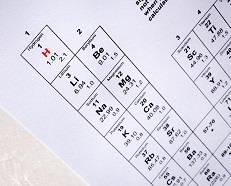
When we look at the trend of ionisation enthalpy in the groups, we can observe that it drops from the top to the bottom of each group. As a result, ionisation energy normally increases from one period of the periodic table to the next across the table. Consequently, when the size of an atom shrinks, the attractive attraction between the nucleus and the electrons on the outermost shell of the atom grows. The atomic radius decreases as one moves from left to right in a period of time. The Enthalpy of Ionisation Is Measured As Moving from the top to the bottom of a group causes them to increase in size because the number of shells increases in proportion to the increase in atomic number. Atomic Radii and Ionic Radii Are Both Defined As Followsĭuring the course of a period, the atomic and ionic radii of elements decrease as they progress from left to right. Observe the trends in an element’s essential characteristics first. Following a thorough examination of the concepts, we can establish a link between chemical properties and the fundamental properties of elements. The ability to recognise periodicities in the fundamental properties of elements (atomic and ionic radius, ionisation enthalpy, and electron gain enthalpy) will allow you to conclude that an element’s electronic configuration is primarily responsible for the periodicity in its fundamental properties.


For example, the atomic and ionic radii of elements decrease from left to right as they move through a period. The systematic arrangement of elements in a periodic table reveals periodic tendencies in the properties of elements that are revealed by the periodic table. Trends of Chemical Reactivity in Periodic Table Atomic and ion radius, ionisation energy, and electron affinity all fall into this category. The electrical structure of the elements influences these properties. We can study some of the features that regulate the chemical behaviour of elements by understanding their electrical structure. The number of electrons in the valence shell does not change as we progress through the elements in a group, but the principal quantum number does. Polonium is a silvery-grey solid that conducts electricity at the bottom of group 16 (6A), while oxygen is a colourless gas at the top of the group.Ī proton and an electron are added to the valence shell for each element that crosses a period from left to right. For example, the metallic nature of the atoms rises as we proceed down a group. But there are other patterns in the periodic table as well. Members of a group have the same number and distribution of electrons in their valence shells, resulting in this resemblance. When they do react they produce hydroxides and hydrogen.Identical chemical properties are shared by the elements arranged in periodic table groupings (vertical columns). The reactions of the elements with water become more vigorous down the group. For similar reasons the electronegativity decreases. This is because as the ions get larger the distance between the bonding electrons and the positive nucleus gets larger and reduces the overall attraction between the two. Generally the melting point of the alkali metals decreases down the group. There is more shielding between the nucleus and the outer electrons and the distance between the nucleus and the outer electron increases and therefore the force of attraction between the nucleus and outer most electrons is reduced. Going down the group, the first ionisation energy decreases. Progressing down group 1, the atomic radius increases due to the extra shell of electrons for each element. They are called s-block elements because their highest energy electrons appear in the s subshell.

Group 1 elements are known as Alkali Metals. Note: Even though Hydrogen will appear above Lithium on the periodic table it is not considered a part of Group 1.


 0 kommentar(er)
0 kommentar(er)
